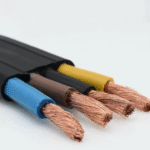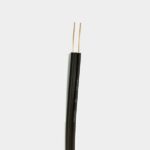Power lines are the backbone of modern electricity distribution, carrying power from generation plants to homes, businesses, and industries. While all power lines serve the same purpose—delivering electricity—their design, voltage level, and structure vary depending on the distance and type of load they serve.

different types of power lines
This article explains the main types of power lines, their characteristics, and where you’ll typically find them.
1. High-Voltage Transmission Lines
Voltage Range: 110 kV – 765 kV (sometimes higher)
Purpose: Carry electricity over long distances from power plants to substations.
Key Features:
Usually supported by tall steel lattice towers or monopoles.
Conductors are widely spaced to prevent arcing due to high voltage.
Often use multiple bundled conductors per phase to reduce energy loss.
Typically found in rural areas, spanning long distances across open fields or mountains.
Example Applications:
Delivering bulk power from a generating station (like a hydroelectric dam or wind farm) to city substations.
2. Medium-Voltage Distribution Lines
Voltage Range: 4 kV – 35 kV
Purpose: Distribute electricity from substations to neighborhoods and businesses.
Key Features:
Usually mounted on wooden or concrete utility poles.
Found along roadsides, in residential areas, or industrial zones.
Can be overhead or underground (especially in urban areas).
Often have transformers mounted on poles to step down the voltage for local use.
Example Applications:
Delivering electricity to your street or business district before final step-down.
3. Low-Voltage Service Lines
Voltage Range: 120 V – 240 V (typical for homes)
Purpose: Provide electricity directly to households and small businesses.
Key Features:
The lines that run from the pole-mounted transformer (or underground service) into a home.
Typically consist of three wires: two “hot” wires and one neutral.
Usually much lower on the utility pole compared to medium-voltage lines.
Example Applications:
Powering household appliances, electronics, and lighting.
4. Overhead Power Lines
Voltage Range: Can be low, medium, or high voltage depending on application.
Purpose: Traditional and cost-effective way to transmit power.
Key Features:
Easier to install and maintain compared to underground cables.
Exposed to weather, which can cause outages due to storms or falling trees.
5. Underground Power Cables
Voltage Range: Low to medium voltage (though high-voltage underground lines exist).
Purpose: Used in urban areas or where aesthetics and space constraints are important.
Key Features:
Protected from weather and physical damage.
More expensive and harder to repair than overhead lines.
6. Submarine Power Cables
Voltage Range: Can handle high voltages (e.g., 400 kV for intercontinental connections).
Purpose: Transmit power under seas, rivers, or lakes.
Key Features:
Heavily insulated and armored to withstand water pressure and corrosion.
Used for offshore wind farms and cross-country power exchange.
7. Specialty Power Lines
These include:
Fiber-optic composite lines (for smart grids and data).
Railway electrification lines (for powering trains).
Industrial high-current lines (specialized power delivery).
Visualizing Power Line Levels
(Consider adding a diagram that shows power generation → transmission → distribution → end-user to improve clarity.)
Key Takeaways
Transmission lines handle bulk, long-distance electricity at high voltages.
Distribution lines step the voltage down for neighborhoods.
Service lines bring electricity directly to buildings.
Overhead lines are common due to lower costs, but underground lines are safer and more aesthetically pleasing.





